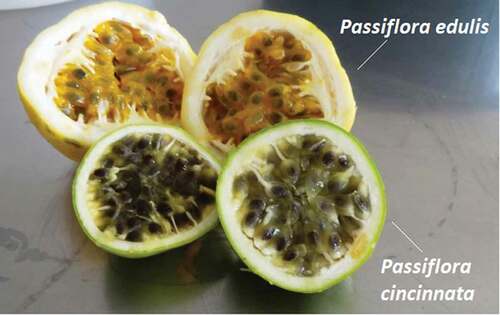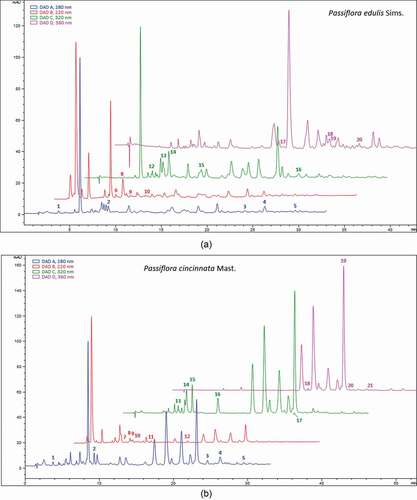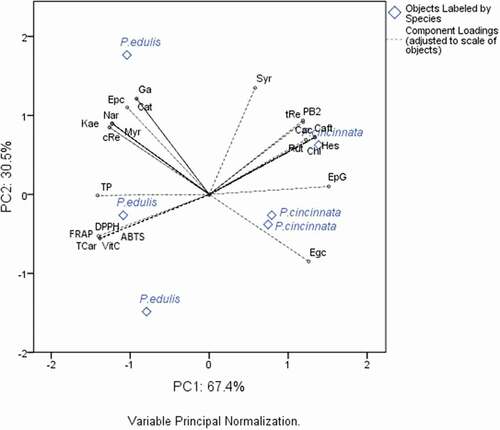Figures & data
Table 1. Physicochemical analysis, sugars and organic acids of Brazilian passion fruit species
Figure 1. Visual appearance of Brazilian passion fruit pulp taken from Passiflora edulis Sims. and Passiflora cincinnata Mast

Table 2. Phenolic compounds profile and total bioactive content of the pulp of Brazilian passion fruit species
Figure 2. Chromatogram of the phenolic profile of LLE extracts from passion fruit pulp from species P. edulis (a) and P. cincinnata (b), as obtained by RP-HPLC/DAD. Legend: 1- gallic acid, 2- syringic acid, 3- hesperidin, 4- cis-resveratrol, 5- naringenin, 6- procyanidin B1, 7- epigallocatechin-gallate, 8- catechin, 9- procyanidin B2, 10- epicatechin, 11- epicatechin-gallate, 12- trans-caftaric acid, 13- chlorogenic acid, 14- caffeic acid, 15- p-coumaric acid, 16- trans-resveratrol, 17- myricetin, 18- quercetin-3-glucoside, 19- rutin, 20- kaempferol-3-glucoside

Figure 3. In vitro antioxidant activity of the pulp of two Brazilian passion fruit species. Antioxidant activities measured with DPPH• and ABTS+• expressed as mmol kg−1 equivalent to Trolox. Antioxidant activity measured with FRAP expressed as mmol Fe2+ kg−1. Bar averages, followed by equal letters, do not differ from each other by the Tukey test at 5% of error probability

Figure 4. Principal component analysis of passion fruit species, with phenolic compounds profile, total carotenoids, vitamin C and in vitro antioxidant activity. Legend: EpG – epicatechin-gallate; Egc – epigallocatechin-gallate; Cat – catechin; Epc – epicatechin; PB2 – procyanidin B2; Syr – syringic acid; Cac – cafeic acid; Chl – chlorogenic acid; Ga – Gallic acid; Nar – naringenin; Hes – hesperidin; Kae – kaempferol-3-glucoside; Myr – myricetin; Que – quercetin-3-glucoside; Rut – rutin; tRe – trans-resveratrol; cRe – cis-resveratrol; TP – total phenolic; Tcar – Total carotenoids, VitC – vitamin C; DPPH•, ABTS+• and FRAP – in vitro antioxidant activity methods

